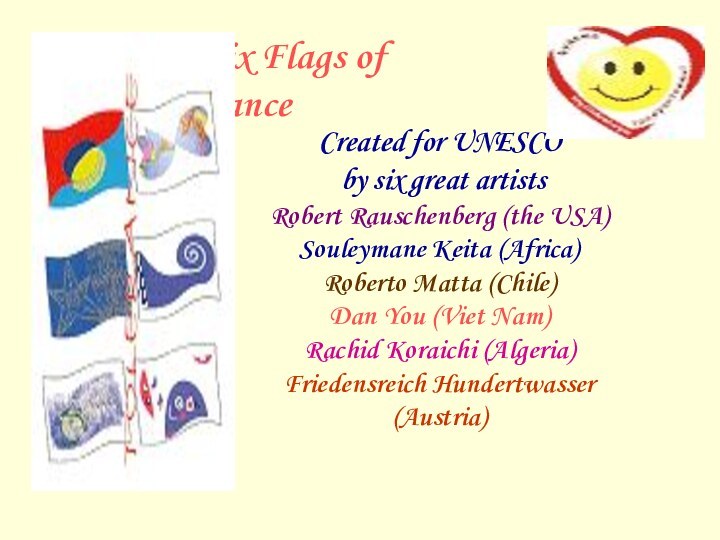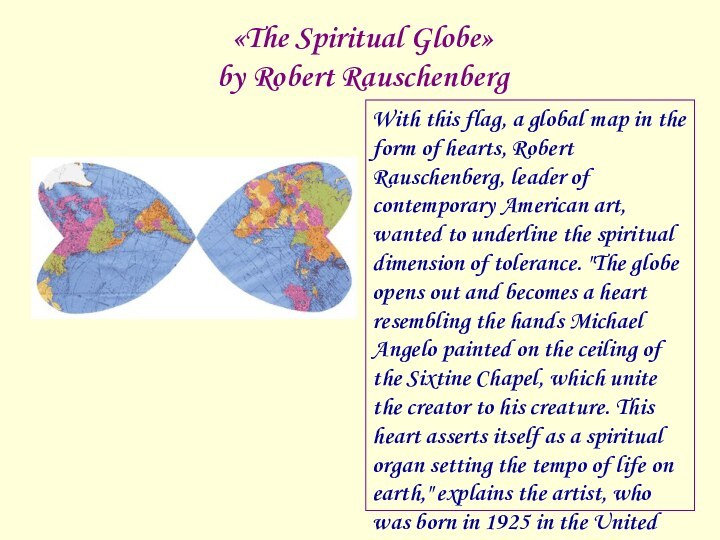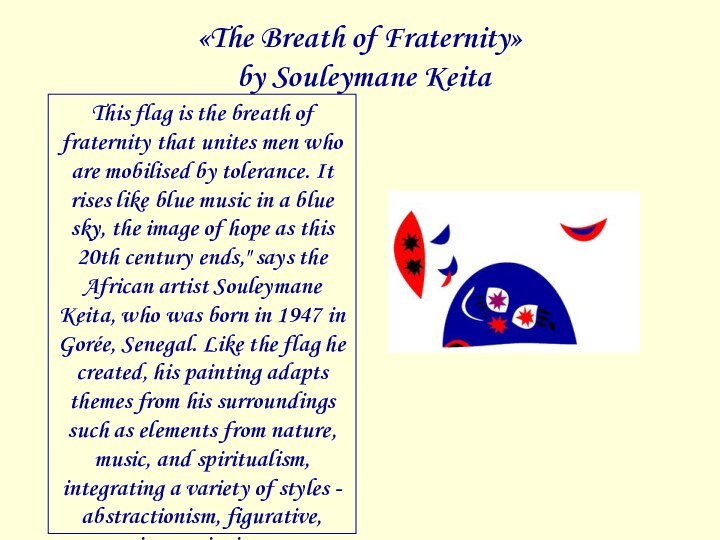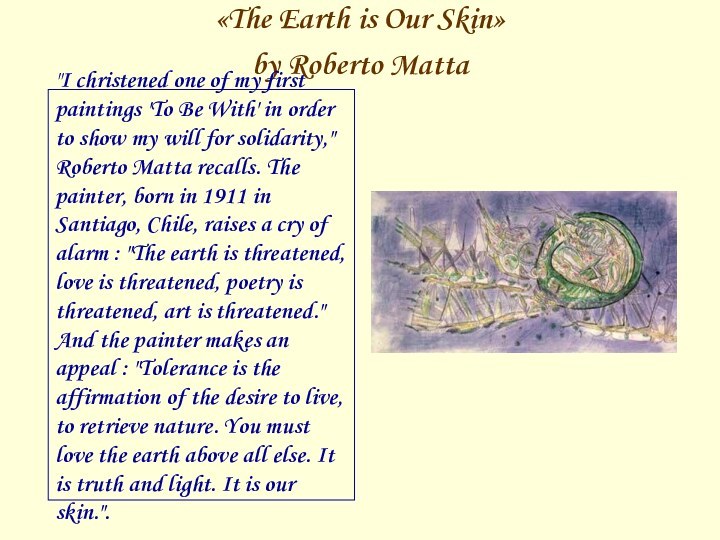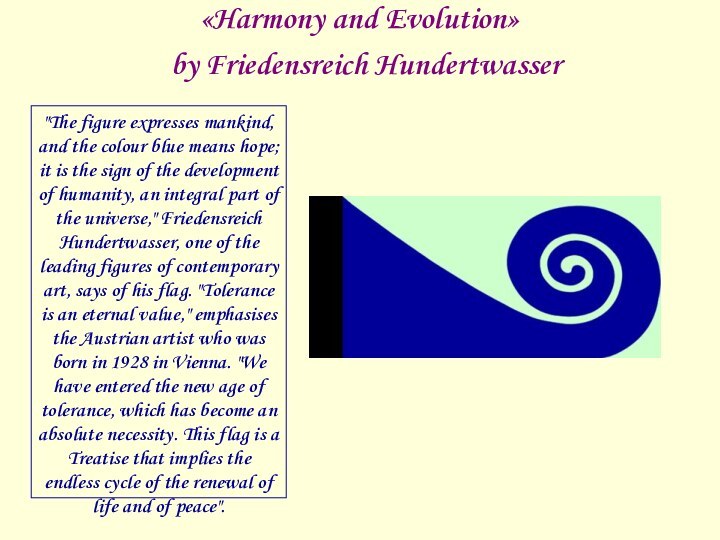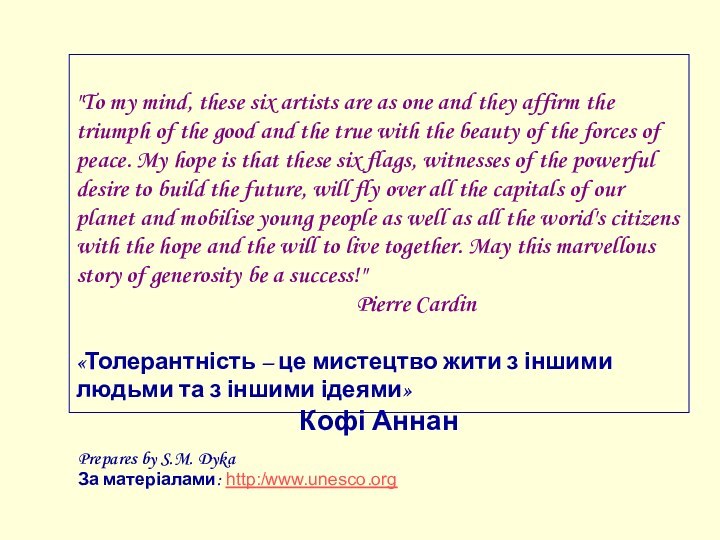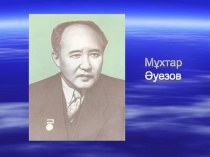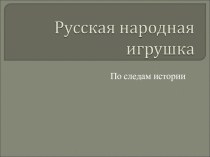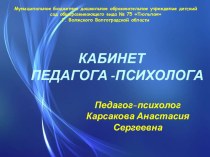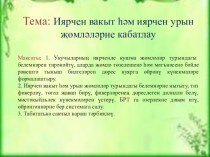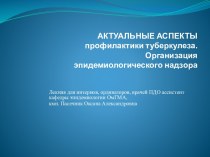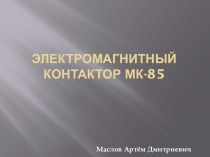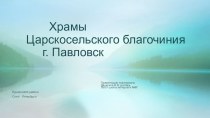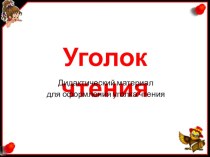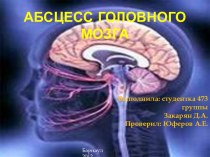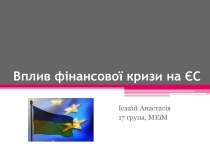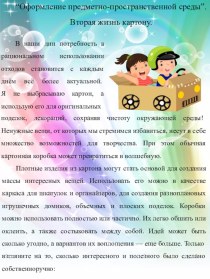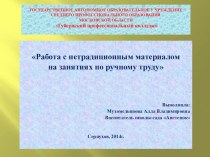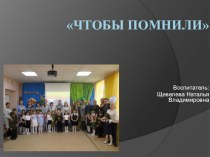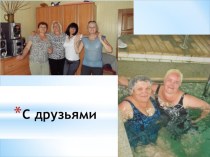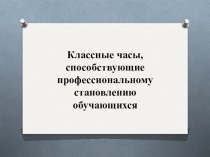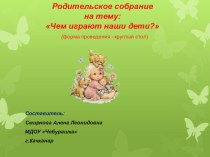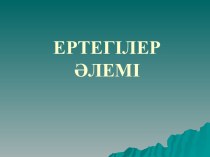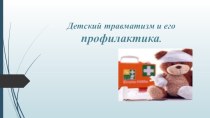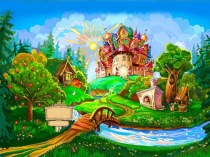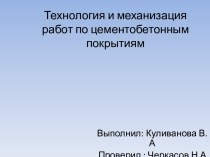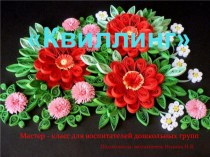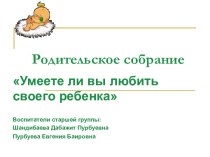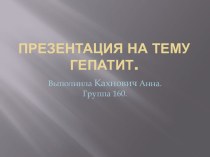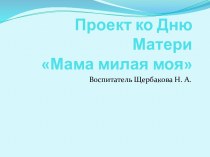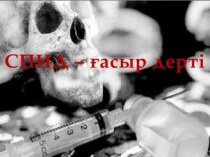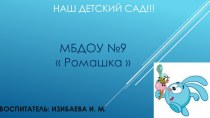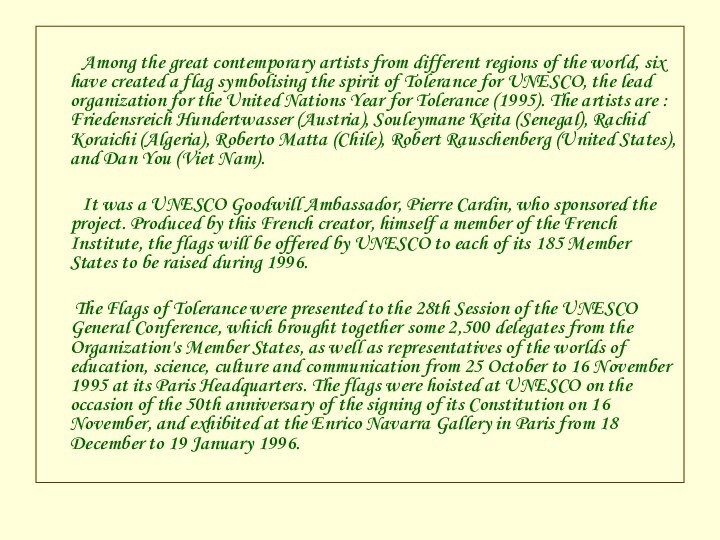
Among the great contemporary artists from different
regions of the world, six have created a flag symbolising the spirit of Tolerance for UNESCO, the lead organization for the United Nations Year for Tolerance (1995). The artists are : Friedensreich Hundertwasser (Austria), Souleymane Keita (Senegal), Rachid Koraichi (Algeria), Roberto Matta (Chile), Robert Rauschenberg (United States), and Dan You (Viet Nam).
It was a UNESCO Goodwill Ambassador, Pierre Cardin, who sponsored the project. Produced by this French creator, himself a member of the French Institute, the flags will be offered by UNESCO to each of its 185 Member States to be raised during 1996.
The Flags of Tolerance were presented to the 28th Session of the UNESCO General Conference, which brought together some 2,500 delegates from the Organization's Member States, as well as representatives of the worlds of education, science, culture and communication from 25 October to 16 November 1995 at its Paris Headquarters. The flags were hoisted at UNESCO on the occasion of the 50th anniversary of the signing of its Constitution on 16 November, and exhibited at the Enrico Navarra Gallery in Paris from 18 December to 19 January 1996.
Слайд 3
Communicate, learn, take the paths of tolerance
Alarmed by
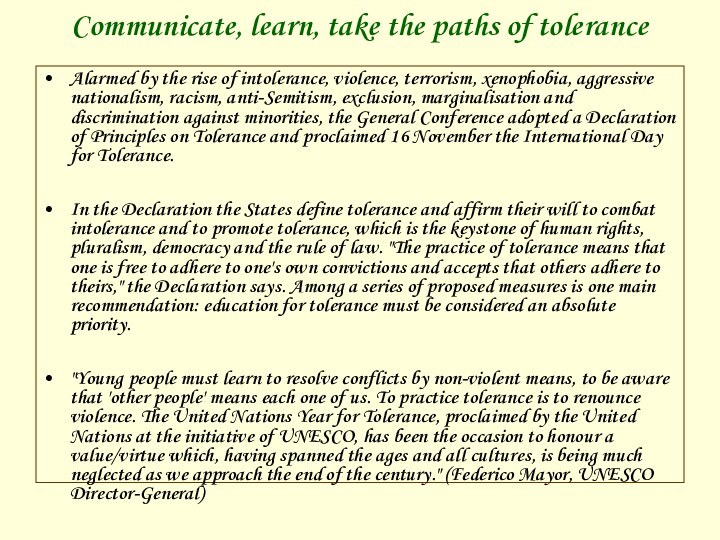
the rise of intolerance, violence, terrorism, xenophobia, aggressive nationalism,
racism, anti-Semitism, exclusion, marginalisation and discrimination against minorities, the General Conference adopted a Declaration of Principles on Tolerance and proclaimed 16 November the International Day for Tolerance.
In the Declaration the States define tolerance and affirm their will to combat intolerance and to promote tolerance, which is the keystone of human rights, pluralism, democracy and the rule of law. "The practice of tolerance means that one is free to adhere to one's own convictions and accepts that others adhere to theirs," the Declaration says. Among a series of proposed measures is one main recommendation: education for tolerance must be considered an absolute priority.
"Young people must learn to resolve conflicts by non-violent means, to be aware that 'other people' means each one of us. To practice tolerance is to renounce violence. The United Nations Year for Tolerance, proclaimed by the United Nations at the initiative of UNESCO, has been the occasion to honour a value/virtue which, having spanned the ages and all cultures, is being much neglected as we approach the end of the century." (Federico Mayor, UNESCO Director-General)
Слайд 4
«The Spiritual Globe»
by Robert Rauschenberg
With this flag,
a global map in the form of hearts, Robert
Rauschenberg, leader of contemporary American art, wanted to underline the spiritual dimension of tolerance. "The globe opens out and becomes a heart resembling the hands Michael Angelo painted on the ceiling of the Sixtine Chapel, which unite the creator to his creature. This heart asserts itself as a spiritual organ setting the tempo of life on earth," explains the artist, who was born in 1925 in the United States.
Слайд 5
«The Breath of Fraternity»
by Souleymane Keita
This
flag is the breath of fraternity that unites men
who are mobilised by tolerance. It rises like blue music in a blue sky, the image of hope as this 20th century ends," says the African artist Souleymane Keita, who was born in 1947 in Gorée, Senegal. Like the flag he created, his painting adapts themes from his surroundings such as elements from nature, music, and spiritualism, integrating a variety of styles - abstractionism, figurative, impressionism.
Слайд 6
«The Earth is Our Skin»
by Roberto Matta
"I
christened one of my first paintings 'To Be With'
in order to show my will for solidarity," Roberto Matta recalls. The painter, born in 1911 in Santiago, Chile, raises a cry of alarm : "The earth is threatened, love is threatened, poetry is threatened, art is threatened." And the painter makes an appeal : "Tolerance is the affirmation of the desire to live, to retrieve nature. You must love the earth above all else. It is truth and light. It is our skin.".
Слайд 7
«The Balance of Life»
by Dan You
Dan You works on image concepts with Jean
Michel Jarre, whose concert for tolerance was attended by 1.5 million persons on 14 July 1995 in Paris. His flag represents the four elements : "Air, fire, earth and water, the source of all being and beyond any dogmas," says the artist, who was born in 1958 in Saigon (Viet Nam). "The defined and infinite forms reflect the paradoxes of the Yin and Yang components of balance. Asia has found and will find the paths of tolerance within its extremes".
Слайд 8
«The Path of the Infinite»
by Rachid Koraichi
"Blue,
a supraterrestrial colour, is the path of the infinite.
It expresses detachment from the values of this world," says the Algerian artist Rachid Koraichi, who was born in 1947. "For an African, gold is the principle of solidity, of human security, the principle of happiness." The five-pointed star incarnates the human microcosm: "It shines in people's hearts, which are obscured by passions." Like a talisman, the checkerboard recalls the seven words of the Muslim profession of faith : seeking, love, knowledge, independence, unity, wonder, devotion
Слайд 9
«Harmony and Evolution»
by Friedensreich Hundertwasser
"The figure expresses
mankind, and the colour blue means hope; it is
the sign of the development of humanity, an integral part of the universe," Friedensreich Hundertwasser, one of the leading figures of contemporary art, says of his flag. "Tolerance is an eternal value," emphasises the Austrian artist who was born in 1928 in Vienna. "We have entered the new age of tolerance, which has become an absolute necessity. This flag is a Treatise that implies the endless cycle of the renewal of life and of peace".
